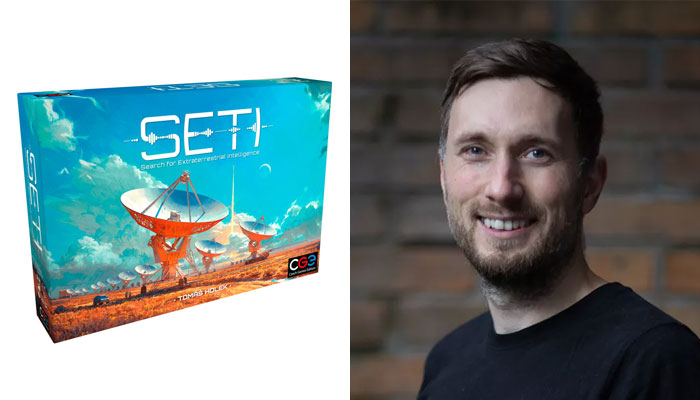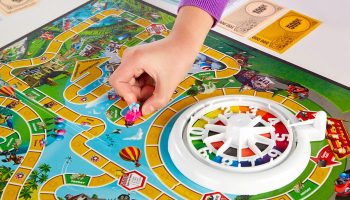Designer Tomáš Holek on the origins of SETI – and what helps complex games feel intuitive

Tomáš, before we dive into SETI, what set you on the path to game design?
I’ve enjoyed designing games since childhood. I remember that when I first had games like CATAN or Carcassonne as a kid, I was always more interested in coming up with my own scenarios and creating new components than actually playing the game. This passion has stayed with me to this day. I absolutely love the entire process of developing board games; it’s something that fulfils me completely.
SETI stands for ‘search for extraterrestrial intelligence’. Was this area a passion of yours prior to creating the game?
Yes, absolutely. The cosmos, physics and science is a huge passion of mine and I’m very involved in it. I have a few telescopes and go out to observe the night sky, follow news in these fields, go to lectures, read books and a lot more.
What came first, the game mechanics or the SETI theme?
The first was definitely a theme. I started thinking about this topic about seven years ago when I was the most immersed in astronomy in my life. It was also a time when I wanted to get into board game design a lot more than I had been – and I wanted to make a really big game. It was clear that it had to be about space and science.

SETI is packed with interesting decisions and the theme makes it all quite intuitive. What role do you feel theme plays in helping to make a complex game ‘digestible’?
I think it matters a lot. I tried to put as many mechanics as possible into the game that somehow represent the real world. Then it’s easier for the player to visualise and understand everything, because they can imagine why it works that way. It means that maybe they don’t even have to remember some of the rules because it automatically makes sense to them.
I imagine it’s easier to add complexity to a game than to strip it away. What guides your thoughts around the ‘weight’ of a game? How do you gauge when to add and when to streamline?
Yes, it’s definitely easier to add complexity to a game than to remove it. I had a clear idea about the game’s complexity from the very beginning, and I think the very first prototype had the same level of complexity as the final game.
When it comes to streamlining, I learned a lot along the way. I worked closely with Czech Games Edition developer Tomáš Uhlíř – he designed the excellent solo game Under Falling Skies. Tomáš is definitely the best streamliner I know. I would always bring a new version of the prototype, and Tomáš helped with key design decisions and with streamlining the game. Over the year that we worked together, I learned a lot in this area from him.

What made CGE a good home for SETI?
Everything! It’s an amazing team made up of the best people in the industry. I pitched the game to CGE because I knew they could get the absolute best out of it. Whether it’s development, graphics, production or marketing – every aspect of the process is handled flawlessly. I’m incredibly glad they chose the game, and that I had the opportunity to develop it with them.
Looking ahead, what other games from you should we keep an eye out for?
A lot is planned for the future. Over the next two years, I plan to release over 10 games, including smaller family games, card games and potentially something larger… I can’t reveal much yet, since nothing has been officially announced!
One announcement that has already been made is the game Forestry, created by my friend and colleague Michal Peichl. It will be released at Essen 2025 by Pink Troubadour. I’m not the designer of the game, but I designed the solo mode for it. Michal asked me to, since I really enjoy playing and designing solo games.
But soon, you’ll definitely hear about more games that I’m working on.
We’ll keep an eye out! Thanks again Tomáš – and congrats on the launch of SETI.
–
To stay in the loop with the latest news, interviews and features from the world of toy and game design, sign up to our weekly newsletter here



























